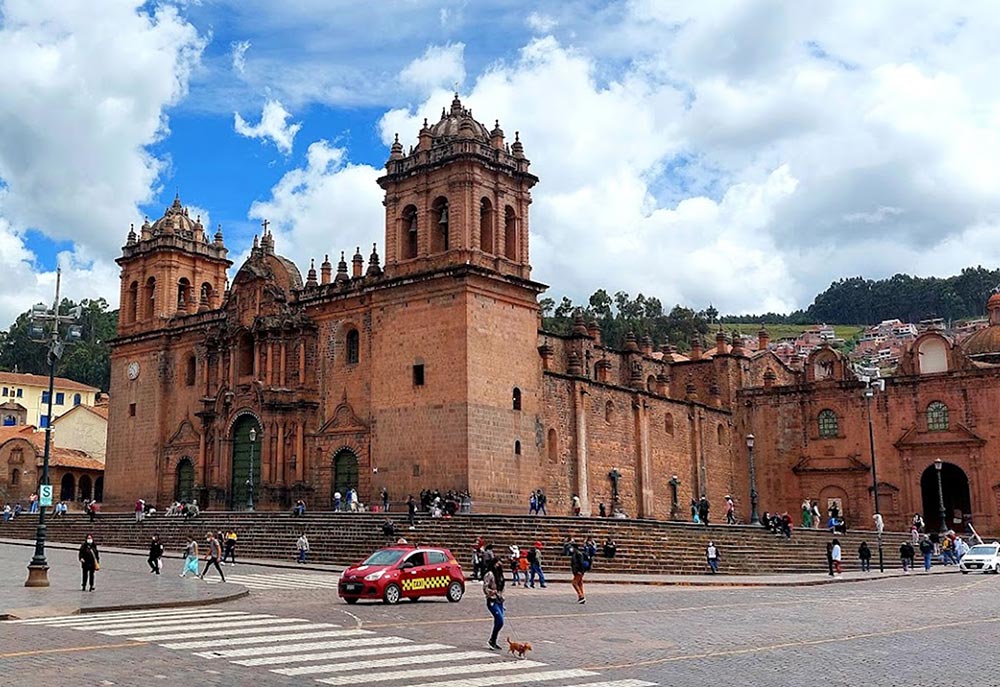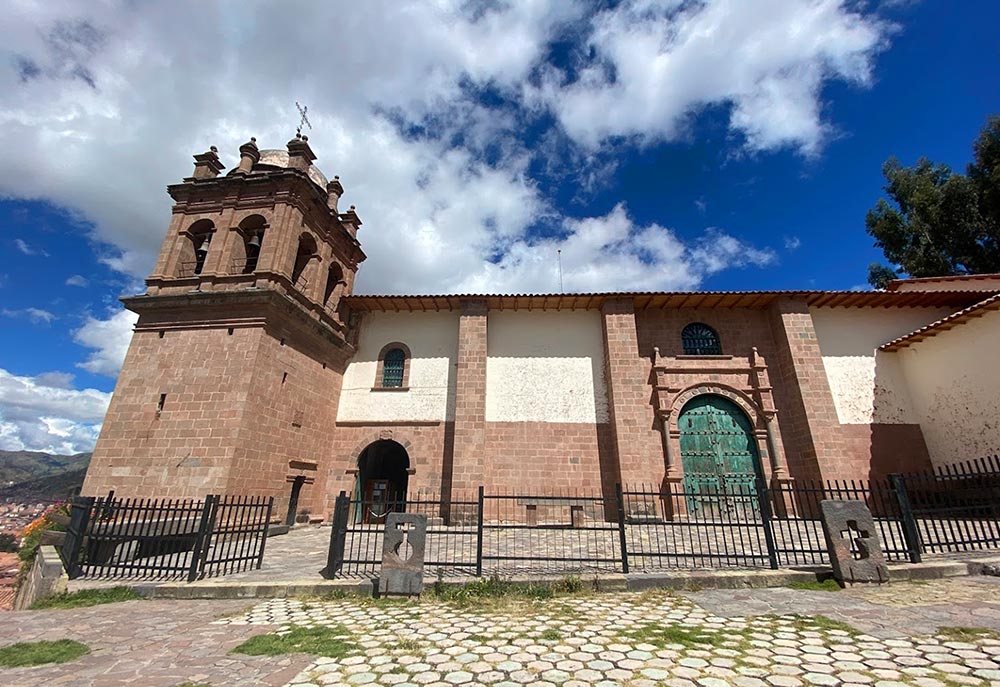Ticket of the Arzobispal religious circuit in Cusco
One of the best routes combining art, culture, and history; is the Archiepiscopal Religious Circuit or CRA. This tour is a temporary trip to the viceregal era. The art expressed is a sample of what happened in the 16th and 17th centuries. In most Peruvian temples, we found art religious can see the art of the renowned Cusqueña School or Andean Baroque. This art style is recognized for showing the symbiosis of two cultural manifestations, the western tradition together with the Andean worldview.
Content
To establish social dominance during the colonial era, founded cities in most of the conquered lands. As in the case of 1534, the date of the Spanish foundation of Cusco, or that of 1535, when the city of Lima was established. However, viceroyalty, as such, in Peru began in the year 1542. Interposed laws and the arrival of European colonists started with a cultural and social exchange that destroyed the existing panorama, aligning itself towards a Spanish one.
However, this process could not be developed for free. During the 16th and 17th centuries, many schools of painting arose, the most recognized the ones from Cusco over those of Lima and Quito. The inclusion of indigenous and mestizo artists achieved a new expression. As they became skilled they acquired greater artistic freedom. Therefore, they included motives typical of the Andean worldview on European issues.
This process came to configure an artistic movement with the first national glimpses. A sample of all this expression can be commissioned to decorate the great temples, monuments of the cities, and some streets, among other things. Since Tawantinsuyo was conquered, the Andean Baroque the first time showed the Spanish crown expressions typical of Perú. When taking this tour you can appreciate a new artistic paradigm and religious influence as an evangelizing medium. Let us begin.
1. Basilica Cathedral of Cusco
It is located in the Plaza de Armas of Cusco in the northeast sector. Its foundations were on Inca constructions. The Suntur Wasi, or “Government House” and the Kiswarcancha, or “Palace of the Inca Wiracocha”, were the buildings chosen to be replaced. Being the most important religious construction in the city, it is normal for it to occupy 3,320 square meters. Like most temples, it has the shape of a Latin cross.
It is estimated that the construction of the Cathedral Basilica of Cusco was completed in approximately 94 years. Going through different architects and construction experts to supervise the building. Luckily for the project, the 1650 earthquake did not cause much damage, except in one of the vaults, which generated a small structural change to reinforce the weak points throughout the construction. The first mass celebrated was on August 15, 1654, the year in which the construction was completed.
A large part of the structure is based on stones obtained from the remains of Sacsayhuaman and places close to it. The emblematic details of this cathedral can be seen in different elements, such as architecture, cabinetry, goldsmithing, and painting. All these are with details of the Andean baroque that were introduced with more value during the last years of construction. For example, the main altar is entirely plated with silver sheets.
The opening hours of the Basilica Cathedral of Cusco are from Monday to Sunday from 10:00 a.m. to 6:00 p.m.
2. The Archiepiscopal Museum of Cusco
This museum is located a few meters from the Plaza de Armas of Cusco. The museum belongs to the facilities of the Archbishop’s Palace of Cusco. This construction dates from the beginning of the conquest, although surely it went through different stages and forms of construction until it reached the one we know today. It was the marquises San Juan Buenavista and Rocafuerte who probably gave the current form that has been preserved until today.
It was built on the ceremonial platform in honor of Sinchi Roca, the sixth Inca of Tawantinsuyo. In the middle of the 20th century, it was considered part of the Archbishopric of Cusco. Of course, it is after being built and remodeled by the aforementioned marquises. The architecture that can be seen is of different strains. You can find a fusion of styles in terms of how to build; from Inca and colonial constructions.
Within the facilities of the Archbishop’s Palace, you can find everything from pre-Hispanic influences, and elements from other times to more contemporary insertions. For example, the presence of the Renaissance-style courtyard that has arches with Sevillian tiles and stones should be highlighted. Some rooms have Inca elements such as Inca stone masonry and remain of paintings that were made during the colony.
By the will of Archbishop Mons, since 1969, an area has been dedicated to exhibiting famous religious art, you can find representations of Corpus Christi, with a Costumbrista style typical of the 17th century, you can also find the Zodiac series, painted by Diego Quispe Tito and the baroque altarpiece in honor of Santa María Reina de los Cielos. After its recent restoration between 2018 and 2019, it once again looks spectacular, ready to open its doors to the public.
The opening hours of the Archiepiscopal Museum of Cusco are from Monday to Sunday from 8:00 a.m. to 6:00 p.m.
3. San Cristóbal Temple
It is located on the Sacsayhuamán hill in the Colcamanta area, it can get there following the road from Cusco’s square to the Sacsayhuamán sanctuary. It is located at a considerable height and can be seen from different places near the historic center of Cusco. It is said that it was built by Cristóbal Paulla Inca, an Inca prince, and brother of Atahualpa, Huáscar, and Manco Inca. This building as a way of demonstrating his Christian faith.
The conquistadors granted Cristobal Paula these lands, after having supported the Spanish armies during the Inca resistance. Cristóbal Paulla, was baptized in 1543, imposing the name in honor of Saint Cristóbal de Licia. The first construction that was made became a chapel that later became an Indian parish. This construction did not resist the earthquake of 1650, in its place, the temple was built that remains in force until today. It is built with stone and adobe materials.
It has a building in the shape of a Latin cross. Its chapels are consecrated to San José and San Cristóbal. The most important saint is San Cristóbal, who participates in the Corpus Christi festival. The interior of the temple has a choir and a two-section main altarpiece, with different ornamentation corresponding to the Cusqueña School.It has paintings where the Archangel San Miguel is represented, the martyrdom of Pedro, and the sculpture of San Cristóbal.
The office hours of the San Cristóbal Temple are from Monday to Sunday from 8:00 a.m. to 4:00 p.m.
4. San Blas Temple
It is located in the historic center of Cusco, exactly 430 meters northeast of the Plaza de Armas, in the square that receives this name thanks to the temple. The first construction that was made was to create a parish for the Indians of the city. This temple was built on an Inca foundation, more precisely a temple in the worship of lightning, thunder, and lightning or Illari. It is considered the oldest parish in Cusco.
This construction after the 1650 earthquake was reinforced with stone walls and adobe walls. It has the shape of a Latin cross and a single nave. Its main altar has the ever-present baroque style. This carved structure is considered one of the most beautiful due to the originality of the elements that make it up.
It houses a large number of paintings by the main representatives of the Cusco School. The paintings dedicated to the life of the martyred bishop San Blas stand out. Another series of outstanding works are those that present the resurrection of Lazarus by the artist Diego Quispe Tito. However, the biggest attraction is the pulpit carved in cedar wood. It has a Spanish Churrigueresque style, this work is attributed to the indigenous sculptor Juan Tomás Tuyro Tupac.
The office hours of the San Blas Temple are from Monday to Sunday from 8:00 a.m. to 6:00 p.m.
Prices and schedules
| Temples | General Price | Student Price | schedules |
| Basilica Cathedral of Cusco | PEN 25 | PEN 12.50 | Monday to Sunday from 10:00 a.m. to 6:00 p.m. |
| Religious art museum | PEN 25 | PEN 12.50 | Monday to Sunday from 8:00 a.m. to 6:00 p.m. |
| San Cristobal Temple | PEN 25 | PEN 12.50 | Monday to Sunday from 8:00 a.m. to 4:00 p.m. |
| San Blas Temple | PEN 10 | PEN 5 | Monday to Sunday from 8:00 a.m. to 6:00 p.m. |
| Total ticket (4 destinations) | PEN 30 | PEN 15 | Check schedules |
By Imachupicchu – Last updated, March 24, 2023




